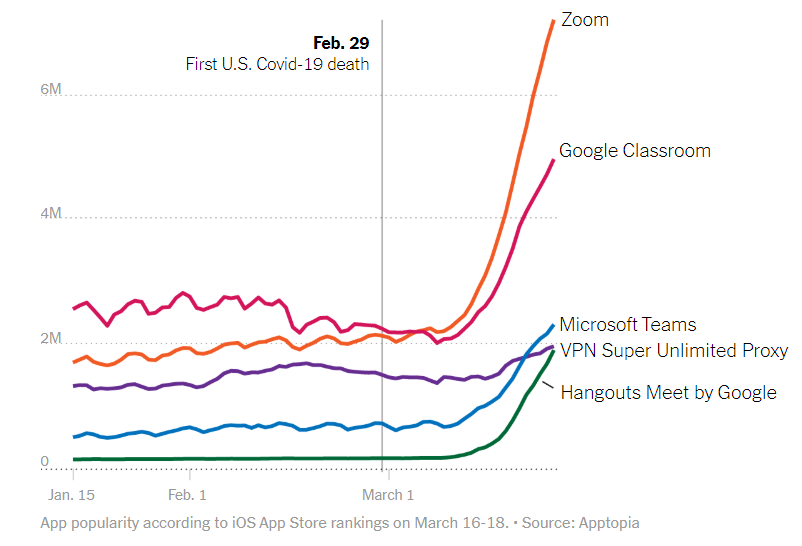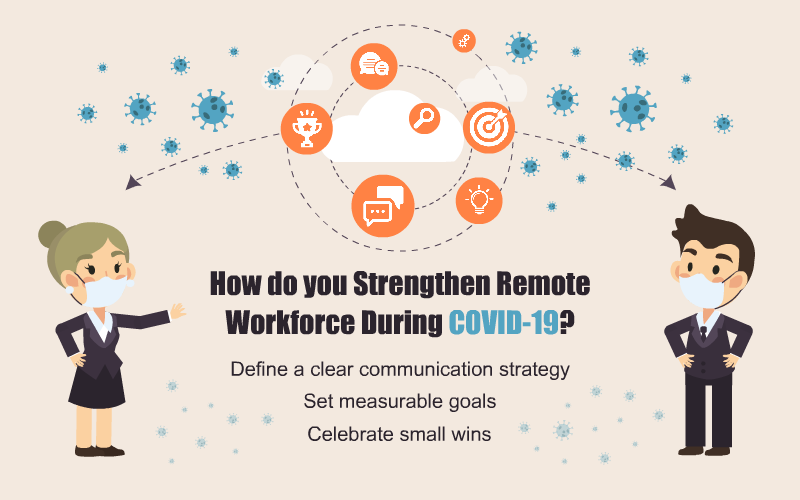Impact of COVID-19 on Consumer Market and Corporate Training

The impact of COVID-19 on business and corporate Learning and Development (L&D) is too great to be ignored. Consumer behavior and spending are changing rapidly due to lockdowns and restrictions. Businesses are trying to stay afloat by launching new products/services, reaching out to customers, and reconfiguring modes of operations. In the same way, social distancing is making L&D leaders to search for alternatives to face-to-face classroom training. To understand the pain points of L&D leaders in the current situation, we even conducted a survey to gauge the impact of COVID-19 on corporate training.
Before discussing this in-depth, here’s a little background on the Coronavirus – the reason behind the disruption.
Implications of COVID-19 on Business and Corporate Training
Business: Change in spending pattern, shift in online platforms, change in media consumption
Corporate Training: Challenges to shift classroom to digital learning, lack of proper infrastructure, unprepared trainers, and more
On 11th January 2020 when China announced its first fatality from the novel Coronavirus, nobody anticipated that the world would be coming to a standstill in a few short weeks. While most of us were still wrapping our heads around the rising number of fatalities, the World Health Organization (WHO) declared Coronavirus to be a global emergency on 30th January 2020.

On 11th February 2020, WHO gave a name to the coronavirus disease: COVID-19.
According to John Hopkins University, 185 countries are affected by the coronavirus, with USA, Italy, Spain, Germany, China, and France being some of the worst-affected countries. Here’s the thing, the COVID-19 crisis is unprecedented. While the ever increasing number of fatalities continues to jolt us, organizations across the world are trying to come to terms with the human cost, including the impact of COVID-19 on their business. According to a report by Bloomberg, coronavirus could cost the global economy $2.7 trillion. 94% of the Fortune 1000 are already witnessing disruptions due to COVID-19.
Businesses – with millions of employees working from home – are in disarray and facing greater confusion: How do we sell our services and products? How do we meet our customers and clients? Where should we invest and where should we not? How are we going to work remotely? And most importantly: How are we going to stay afloat in the market?
As of now, the future seems uncertain. That said, the impact of COVID-19 on business has redefined how consumers would behave for years to come. That means business leaders like you will have to play a crucial role in shaping responses for your organizations. The need of the hour is to plan strategically, and be agile and practical to get back on track.
To prepare you for this, I’ll be giving you an overview of the impact of COVID-19 on L&D and talk about important shifts in the consumer market due to COVID-19.
The Business Implications of COVID-19
1. Change in Spending Pattern
With lockdown being imposed in most of the affected countries, there is a short-term boost in spending in certain categories, while others are being cut off by consumers.
For instance, consumers rushed to get essentials such as groceries and household items which were the first to see a spike, followed by products in the home entertainment category. However, out-of-home entertainment, travel, apparel, and restaurants have taken a bad hit.
Let’s look at a few figures to understand the change in spending in consumer market due to COVID-19.
- There has been a sudden increase in the sale of consumer packaged goods (due to panic buying) in many places around the globe – they increased by almost 11% in Italy, 10% in the US, 8% in the UK and 9% in France.
- 16% of US consumers expect to buy more of stay-at home games, especially virtual or video games.
- Global fashion, apparel, and accessories are witnessing a more than 30% drop in revenues owing to government restrictions.
- The travel industry is one of the worst affected. The global travel business sector is expected to lose about $820 billion in revenues.
2. Shift to Digital Channels
With consumers spending more (or most) time at home, online is becoming the channel of choice. Be it shopping for essentials or connecting for work, online has become the new normal, for now at least.
- Social distancing is making people try new ways of connecting, mostly through video chats. Here’s what The New York Times has found out.

Most of these apps allow people groups of people to join in a single video call and play games online.
- People are becoming increasingly dependent on online platforms that enable working and learning from home, reports The New York Times. Zoom, Microsoft Teams, and Hangouts Meet by Google are some of the popular apps that support remote working. School assignments are also being handed out on Google Classroom.

3. Change in Media Consumption
With increasing number of consumers at home, the media consumption pattern has also changed. There is a rise in at-home media consumption, including movies and live news. In the US, the search for updates on the virus has increased readership for established as well as local newspapers (NY Times). Traffic to local news sites is growing because of people interested to know how COVID-19 is affecting their hometown.
This was all about the consumer market in general, but what’s the impact of COVID-19 on corporate Learning and Development?
Impact of COVID-19 on L&D
Here are the results of a survey that’ll give you an overview of the impact of COVID-19 on L&D or corporate training. This is what we found!
- Almost 40% of organizations that had opted for face-to-face classroom training before COVID-19 are in a dire situation with regard to training.
- Over 51% of organizations are still trying to completely migrate their face-to-face classroom training to other formats.
- Over 43% organizations have had their training budgets negatively impacted.
These are the reasons for the training disruption, leading to the challenges that organizations and learners are facing today due to COVID-19.
| Reasons for Disruption in Training | |
| Organizations |
|
| Learners |
|
With uncertainty looming over everything, organizations are exploring multiple digital formats to get their training back on track. As we still don’t know how long this crisis is going to last, transiting to digital solutions will be definitely a smart move. You can either opt to shift your classroom training completely to eLearning, or go with middle-of-the-road solutions such as webinars and VILT sessions.
Going digital allows you to offer self-paced learning which is critical at this time – with both managing and employees working remotely. Moreover, you can offer better performance support to your employees with digital learning assets since it allows learning in the flow of work.
If you want to find tips and solutions to these L&D challenges, subscribe to and follow this blog series. These blogs will help you stay abreast with the latest updates (on the impact of COVID-19 on corporate training and its implications in general) and prepare you for the current as well as the future situation. Stay tuned to this space for more!
Concluding Remarks
Before signing off, here’s something for you. Since we have been talking about going online or virtual to compensate for face-to-face interactions, here’s a resource you might be interested in.
Download this free eBook that’s packed with tips, tools, and suggestions and is a handy resource on making the switch to virtual classroom training.






![How eLearning Contributes to Global Corporate Training Needs [Video]](https://blog.commlabindia.com/hubfs/Imported_Blog_Media/elearning-contribution-global-corporate-training-needs-video.png)